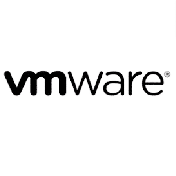Seminarinhalt
After you successfully complete this course, expect to be able to:
- Describe the purpose and features of OpenStack
- Describe its high level architecture and list its major components
- Describe methods of access to OpenStack services
- Gain basic hands-on experience
Programm
- What is a cloud - What is OpenStack
- OpenStack architecture
- OpenStack installation
- Your lab system
Module 2: Accessing OpenStack
- OpenStack API, endpoints and WSGI
- Authentication and tokens
- The OpenStack command line and dashboard
Module 3: Keystone (Identity) •• Keystone concepts
- Keystone API versions
- Keystone command line
- Authentication, authorization and policies
Module 4: Nova (Servers)
- Nova concepts
- How a user sees Nova instances
- Instances, keypairs, console, IP addresses, security groups,instance-specific data
- Launch instances and make them available on the network
- Customize instance with user data
- Nova implementation
- Nova microversions
- Nova architecture
- What happens when an instance is launched
- Nova scheduler and placement service
- Managing compute nodes
- Overview
- Cells
- Aggregates and availability zones
- Nova troubleshooting
Module 5: Glance (Images)
- Glance concepts
- Where to get images
- Disk and container formats
- Uploading images
- Glance backends
- Controlling image upload
- Image upload - classic method
- Image upload - interoperable image import method
- Image metadata
Module 6: Neutron (Networks)
- Neutron resource abstractions
- Networks, subnets, ports, routers
- Provider networks, external networks, tenant networks
- Floating IPs and address translation
- Command examples
- Network implementation
- Network separation and access
- Routing
- Plugins and agents
- The ML2 plugin
- The Nova metadata service and Neutron
Module 7: Cinder (Block Storage – LUNs)
- Basic concepts and commands
- OpenStack storage overview
- What cloud operators and users want from storage
- Storage drivers
- Creating, deleting, attaching, detaching, listing volumes
- Using volumes as boot disks
- Multi-attach
- Cinder implementation
- Advanced concepts
- Backends, volume types and extra specs
- Snapshots
- Backups
- HPE storage and Cinder
Module 8: Swift (Object Storage)
- Swift concepts
- Why object storage
- Accounts, containers, objects
- Replication
- Using Swift
- Uploading and downloading objects
- Other commands
- Access control
- TempURL
- Large objects
- Swift architecture
Module 9: Ceilometer (Metering) and Heat (Orchestration)
- Ceilometer and the Telemetry family
- Telemetry architecture and dataflow
- Ceilometer sampling and publishing to Gnocchi
- Alarms
- Heat: orchestrating a cloud application
- Templates and stacks
- Heat architecture
- Example template
- Heat and autoscaling
- Launching and viewing a stack
Zielgruppen
Vorkenntnisse
- Completion of Linux Fundamentals (U8583S)
- Completion of Linux for Unix Administrators (U2794S)
- Completion of Cloud Computing Overview WBT (HK917AAE)



